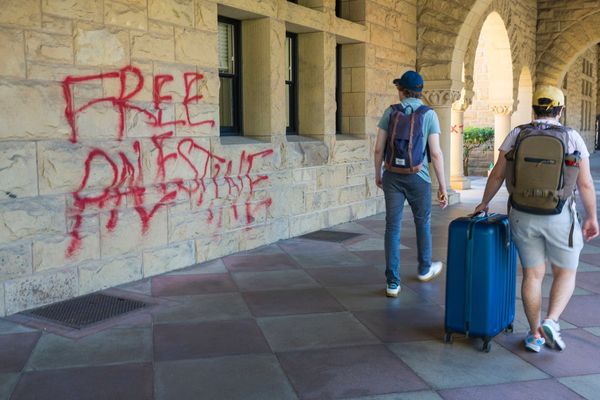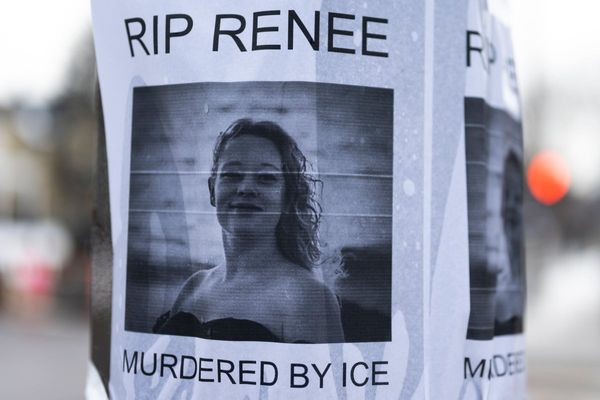For two years, Western Australian Premier Mark McGowan has tried to protect the county's most lucrative industry, iron ore, from COVID-19.
However, last month, the virus found its way to the Pilbara.
Five BHP workers contracted the disease and were forced to quarantine in their dongas (small accommodation rooms) at their remote worksite, 1,400 kilometres north of Perth.
In all, 79 workers were tested on site and 34 — the COVID-positive patients plus their close contacts — were quarantined in their rooms.
Their quarantine was initially meant to be for 14 days, but earlier this week the West Australian government changed the isolation duration to seven days and they were released.
It is the tip of the iceberg scenario that the mining sector — and both state and federal governments — hope to avoid as the Omicron variant spreads through Western Australia.
"We have to be ready," Rio Tinto Iron Ore chief executive officer Simon Trott told The Business.
"We're going to have to respond to the circumstances that we face each time, and we can't stand here and predict exactly what will happen in the future.
"Certainly, we're seeing greater cases in the community."
Why is it so important to protect the iron ore sector?
West Australian iron ore miners sold $155 billion worth of the commodity in 2020-21.
Last financial year, the Pilbara Ports Authority loaded 676.3 million tonnes for export on behalf of companies — including Rio Tinto, BHP, FMG and Roy Hill — as well as other smaller operators.
Those exports, mostly to China, are the single-biggest contributor to Australia's GDP.
"For Western Australia, in particular, it's a massive source of revenue," Bell Potter Securities's Giuliano Sala Tenna said.
Last financial year, the West Australian government pocketed $9.8 billion in royalties from iron ore miners.
It was a 26 per cent increase on the year before — boosted by the record high iron ore price — and that figure accounted for 89 per cent of the state government's entire royalty revenue.
While the federal government is not paid direct royalties, it receives its windfall via company tax.
The more money the miners make — which is, of course, linked to how much they produce and the price they sell it for (iron ore is currently fetching about $US146 ($203) a tonne) — the more Canberra pockets.
Last year, iron ore miners helped wipe about $50 billion off the federal budget deficit.
Canberra currently assumes iron ore sells for $US55 a tonne. So, when it peaked last year at about $US240 a tonne, there was a lot more tax coming in than the government had budgeted for.
"Historically, we've seen the state and federal governments have generally been fairly conservative in their budget forecasts and that's meant they've had these nice windfalls," Mr Sala Tenna explained.
As Treasurer Josh Frydenberg does his final calculations for the March budget — and the Prime Minister Scott Morrison continues his unofficial election campaign — keeping that money tap flowing has rarely been more important politically.
Triple vaxxed plus RATs
To limit the impact of COVID-19 on the lucrative industry, the West Australian government has mandated all mine workers be triple vaccinated within one month of becoming eligible.
The mining companies are going another step further.
Anyone who visits an iron ore mine site must pass a rapid antigen test before they get there.
Australia's biggest iron ore miner, Rio Tinto, tests about 12,000 mine workers a week at two testing facilities it has set up at Perth Airport.
Last month, two workers tested positive about an hour before they were due to board their flights to the Pilbara.
"Those individuals were then confidentially and quietly taken away, where follow-up testing [by] confirmatory PCR was undertaken," explained Rio Tinto's chief medical officer Nell Gillett.
It was a close call and one Mr Trott does not expect to avoid forever.
"A really big part is about making sure that we plan for having cases on site," he acknowledged.
Rapid antigen tests are not restricted to its mine workforce.
"We have, in the last week, stood-up screening for employees at our Perth office as well, where employees will be tested on their first day at work each week," Mr Trott added.
BHP mine workers are also subjected to pre-flight rapid antigen tests before they head north.
The worker at the centre of its cluster last month tested negative in Perth and it was not until days later that they had symptoms and produced a positive PCR test while at work.
FMG workers also undergo rapid antigen testing, or the option of a PCR test, before they fly out.
"That's been incredibly effective," FMG's Fortescue people director Linda O'Farrell told The Business.
"Actually, it's good to know that people have been picked up in those testing facilities, so before you get to a site, we're very, very certain that you don't have COVID."
FMG was the first of the iron ore miners to have a COVID-19 scare, when a contractor tested positive after returning from one of its Pilbara mines last August.
There was not any further spread, but FMG mine workers have been having rapid antigen tests since then.
Workers in Perth who operate FMG's trains in the Pilbara, remotely from their desk, are also subjected to daily RATs and their workplace has been completely shut off from the rest of the staff.
If — or indeed, when — there is an outbreak at a mine site, Ms O'Farrell said the company was ready.
"We've got very robust plans in place to make sure that our people are comfortable in their rooms, and that they're adequately supported during that time, because, clearly, that can be isolating, not just in a physical sense, but [also] very much in a mental health sense," she said.
COVID-19 not the only challenge
After two years of a closed border to other states, there is a major skills shortage in Western Australia.
"Clearly that does have an impact in terms of our day-to-day operations and the activities that we do, and we need to work our way through that," Mr Trott said.
As COVID-19 takes workers out of action, that shortage is likely to be exacerbated.
"Labour costs will rise and they won't be able to get jobs done," Mr Sala Tenna explained.
"There will be lots of dislocations within the projects, so we're concerned that we're going to see some weak quarterlies, which could see some knee-jerk reactions to some of the share prices [for] those miners."
The mining companies have been pushing for Western Australia's hard border to come down, so they can have access to a larger workforce.
Could there be another iron ore price boom?
When COVID-19 spread through Brazil, our next biggest iron ore competitor, it crippled its industry.
The chief executive officer of the Pilbara Ports Authority, Roger Johnston, does not think that will happen here.
"We are uniquely lucky in Western Australia. We're not dealing with one miner with one big mine, and then you shut it down," he explained.
"We have multiples of miners, many of them are very large and most of them have a suite of mines.
"When you spread your risk like that you've not vested everything in one mine.
When Brazil's output was cut back, global supply was restricted, while demand from China remained strong, which caused the iron ore price to soar last year.
Mr Sala Tenna explained that, even if Australia's output was disrupted by COVID-19, China's building boom could again drive the price higher.
"If the China policy response is stimulatory, then I would expect to see iron ore continue to actually trend higher, which is not a consensus view," he said.
"If they do that, then that will be very supportive of demand for iron ore at a time where we could see some supply shocks, so you would expect a strengthening iron ore price.
"But, if we saw the Chinese government start to run into some other issues around refinancing, not so much the Chinese government, but some of the Chinese property developers, then you could see a bit of an aggressive sell off."
You can see more on this story on The Business tonight at 8:45pm AEDT on ABC News Channel.







